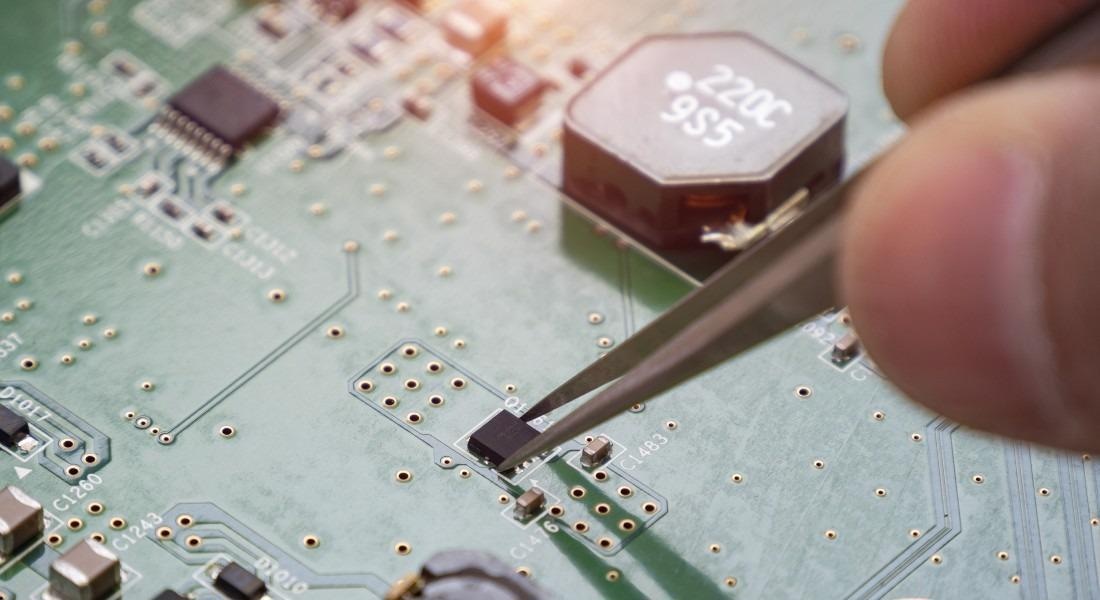The growing miniaturization of computer components that use electrons as their means of data transport has become problematic. Instead, magnetism might be used to keep the advancement of both cheaper and more powerful computers moving forward. Scientists from the Niels Bohr Institute (NBI) at the University of Copenhagen published a new finding in the prominent journal Nature Communications.

Image Credit: Getty.
The function of a computer involves sending electric current through a microchip. While the amount is tiny, the current will not only transport information but also contribute to heating up the chip. When you have a huge number of components tightly packed, the heat becomes a problem. This is one of the reasons why we have reached the limit for how much you can shrink the components. A computer based on magnetism would avoid the problem of overheating.
Kim Lefmann, Professor, Condensed Matter Physics, Niels Bohr Institute, University of Copenhagen
Lefmann states, “Our discovery is not a direct recipe for making a computer based on magnetism. Rather we have disclosed a fundamental magnetic property which you need to control, if you want to design a such computer.”
Quantum Mechanics Halt Acceleration
To understand the discovery, one must first understand that magnetic materials are not always evenly aligned. To put it another way, places with magnetic north and south poles may coexist. Domains are the boundaries between the north and south pole domains, and the domain wall separates them.
Even though the domain wall is not a real thing, it possesses some particle-like properties. As a result, it is an example of quasi-particles or virtual phenomena that mimic particles, as defined by physicists.
It is well established that one can move the position of the domain wall by applying a magnetic field. Initially, the wall will react similarly to a physical object which is subjected to gravity and accelerates until it impacts the surface below. However, other laws apply to the quantum world.
Kim Lefmann, Professor, Condensed Matter Physics, Niels Bohr Institute, University of Copenhagen
“At the quantum level, particles are not only objects they are also waves. This applies to a quasi-particle such as a domain wall as well. The wave properties imply that the acceleration is slowed down as the wall interacts with atoms in the surroundings. Soon, the acceleration will stop totally, and the position of the wall will start to oscillate,” Lefmann adds.
Swizz Hypothesis Provided Inspiration
Electrons exhibit similar behavior. Bloch oscillations are the name given to it in honor of American-Swiss scientist and Nobel laureate Felix Bloch, who discovered it in 1929. In 1996, Swiss theoretical physicists proposed that magnetism could have a connection to Bloch oscillations.
Kim Lefmann and their colleagues were able to test this theory a little more than a quarter-century later. The mobility of domain walls in the magnetic substance CoCl2 • 2D2O was explored by the study team.
We have known for a long time that it would be possible to verify the hypothesis, but we also understood that it would require access to neutron sources. Uniquely, neutrons react to magnetic fields despite not being electrically charged. This makes them ideal for magnetic studies.
Kim Lefmann, Professor, Condensed Matter Physics, Niels Bohr Institute, University of Copenhagen
Boost for Research in Magnetics
Neutron sources are considered large-scale pieces of scientific equipment. Only around twenty facilities exist worldwide, and competition for beam time is strong. As a result, the team has only just received enough data to satisfy the editors of Nature Communications.
“We have had beam time at NIST in USA, and ILL in France respectively. Fortunately, the conditions for magnetic research will improve greatly as the ESS (European Spallation Source, ed.) becomes operational in Lund, Sweden. Not just will our chances for beam time become better, since Denmark is a co-owner of the facility. The quality of the results will become roughly 100 times better, because the ESS will be an extremely powerful neutron source,” notes Lefmann.
To be clear, even if quantum mechanics is involved, Lefmann emphasizes that a computer-based on magnetism is not a type of quantum computer:
“In the future, quantum computers are expected to be able to tackle extremely complicated tasks. But even then, we will still need conventional computers for the more ordinary computing. This is where computers based on magnetism might become relevant alternatives as better than current computers,” Lefmann concludes.
Journal Reference:
Hansen, U. B., et al. (2022) Magnetic Bloch oscillations and domain wall dynamics in a near-Ising ferromagnetic chain. Nature Communications. doi.org/10.1038/s41467-022-29854-9.